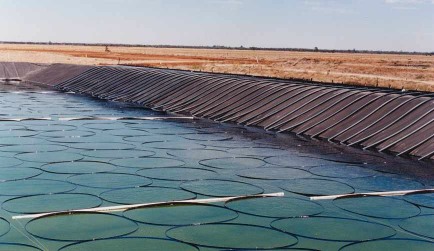|
|
Getting the energy out of the pond Solar ponds are salt lakes which are managed to act as large, low cost, solar heat collectors. As outlined on the previous page, the bottom hypersaline layer can get very hot ... >100 degrees Celcius ... around 70 degrees C in most of southern Australia. The heat can be extracted by withdrawing brine from the bottom (and replacing it on the other side of the pond). This has a number of problems. It is better to use a pipe array heat exchanger in the bottom layer of hypersaline water. The pipes might have brine pumped through them, but are more likely to contain fresh water or radiator coolant (which makes the heat exchangers last longer). Heat exchanger pipes carry fresh water which is heated by the saline pond water. |
At the Pyramid hill solar pond this hot water is then used to heat air to flash dry gourmet salt products. Solar pond heat energy can be used through an air heat exchanger for horticultural glass houses, drying operations or similar. Hot water can be used through aquaculture tank heat exchangers, underfloor water heating (for example for piglet creep areas), radiators in glasshouses or to boil refrigerant in a rankine cycle engine to drive an electrical generator. Municipal applications include heating office or hotel buildings, public swimming pools, spa /sauna tourist complexes etc. Based on the capital cost of pond establishment, heat energy is produced at only 2-3 cents (AUD) per kilowatt hour. Running costs are only the cost of pumping the water through the heat exchanger, minimal labour involved in managing pond clarity and salinty gradient plus an extra saline water trickle and weekly low level salt additions |
||
|
|
|||


